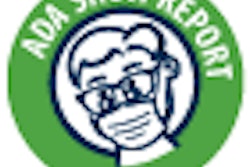The ADA reports on the economic feasibility of midlevel dental providers (MLPs) used unrealistic assumptions and should have included data from Alaska and Minnesota, where such providers are now working, according to the American Association of Public Health Dentistry (AAPHD).
"Unfortunately, the ADA report has several limitations and methodological flaws and does little to advance our understanding of the actual economic impact of midlevel providers on practices or within a delivery system," the AAPHD wrote in a statement. "The practice assumptions used in this report are unrealistic and illustrate the issue of low Medicaid rates -- which most agree are problematic -- but would not be a factor that would impact midlevels any more than it would impact dental practices."
The AAPHD questioned why the report did not include information from the two states where MLPs are working.
"It is unclear why information from dental practices in both Minnesota and the Alaska Native Tribal Health Consortium that currently employ midlevel providers was not included in this report," the association said. "Efficiency and effectiveness can only truly be assessed in areas where the MLPs are actually employed. Whenever possible, actual data rather than hypothetical assumptions should be used to frame public policy."
The impact of MLPs on enhancing the dental safety net and improving access to dental care cannot be ignored, the AAPHD asserted.
In addition, the ADA reports were incorrect when they stated that all dental therapists in Minnesota must be supervised onsite or remotely using teledentistry technology, the AAPHD noted. Dental therapists must have onsite supervision, but advanced dental therapists (ADT) can operate under general supervision and are not required to be at the same location as the supervising dentist, the AAPHD pointed out.
The group also questioned ADA assumptions using single operatory settings or a one-provider to one-assistant ratio, saying both scenarios use the least efficient model.
Key points in the AAPHD response:
The AAPHD supports research that expands the current workforce in the U.S., including research on the impact of dental therapists.
The AAPHD believes the most useful research into the use of MLPs will include their actual impact in dental or other healthcare practices.
The AAPHD supports demonstration projects that develop new and innovative ways to deploy an entire dental team toward the goals of improved health, improved care, and reduced costs.
The impact of demand for services and the changing demographic in the U.S. population must be included in order to make accurate predictions about the introduction of any new workforce model. The ADA report falls short in this regard.
Actual practice data should be evaluated to learn what works and to conduct demonstration projects to make all practices better.
The AAPHD supports a research agenda that develops the evidence for improved practices and accurately and objectively assesses the impact of various workforce models in order to demonstrate which models work and which do not work in addressing the access to care crisis and thus improving the oral health of the U.S. population, the statement concluded.



















